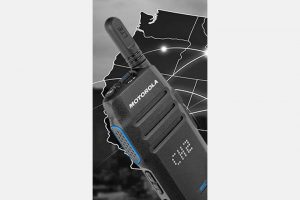How Two-Way Radios Help with Communication During Coronavirus

 As the coronavirus pandemic continues to disrupt life and businesses across the world, many major organizations are considering how to ensure that reliable communication is maintained. This function is especially important for those on the front lines combatting the pandemic, including healthcare providers, public safety organizations, and other first responders. Two-way radios are a vital tool for ensuring many of these crucial lines of communication are maintained.
As the coronavirus pandemic continues to disrupt life and businesses across the world, many major organizations are considering how to ensure that reliable communication is maintained. This function is especially important for those on the front lines combatting the pandemic, including healthcare providers, public safety organizations, and other first responders. Two-way radios are a vital tool for ensuring many of these crucial lines of communication are maintained.
The Department for Homeland Security has released guidance on identifying critical infrastructure during COVID-19, which includes the following industries, among others:
- Emergency Services
- Communications
- Healthcare & Public Health
- Information Technology
- Transportation Systems
- Critical Manufacturing
- Energy
- Financial
- Government Facilities
- Food & Agriculture
- Water
Ensuring that proper communication channels are maintained across these sectors is an essential component in responding adequately to the threats of the virus. These radios offer reliability to manage appropriate emergency responses and interaction with first responders that saves lives.
Two-way radios offer several distinct advantages over cell phones. Cell phones often fail repeatedly when they are needed most, usually due to congestion when too many people are trying to connect simultaneously.
The benefits that two-way radios can provide for emergency services, as well as for any company that wants to ensure communication is stable and reliable, including the following:
Dedicated Bandwidth: Two-way radios often excel when cell phones fail because they have dedicated bandwidth devoted to a limited number of users. This means that communication channels across key individuals are maintained, and congestion is not a problem. The right people are ensured to be able to convey the right information at the right time.
Enhanced Connectivity: Even across larger geographical spans, two-way radios can be reliable. Additional equipment, such as bi-directional amplifiers, distributed antenna systems, and repeaters, can enhance the ability to connect even in the most challenging environments. Some two-way radios can even reach up to 300 miles in distance, ensuring that contact is maintained even with those who aren’t located in the immediate vicinity when necessary.
Group Conversations: Unlike cell phones, two-way radios are not limited to two (or three) contact points. When on an open channel, everyone on your frequency can hear your message, which is a distinct benefit during an emergency situation.
Immediate, Reliable Communication: Two-way radios work when other communication methods do not. They do not become congested, such as cellular networks, and they continue to work even when the Internet may not be accessible. Since they are battery-operated, they continue to work during power outages.
Tracking: Many two-way radios have GPS tracking capabilities. With this feature, you can easily locate and identify where team members are located in the event of an immediate disaster. This feature means you aren’t wasting valuable time in delivering assistance when necessary.
Durability: Two-way radios are durable and lightweight, meaning they can stand up to wear and tear and will continue to be operational even under the most extreme conditions.
Sanitary: While some have voiced concerns about the safety of two-way radios in environments where the radios are shared across employees when sanitized properly, you can eliminate any risk of transmission that may occur through the sharing of radios.
Two-way radios provide an essential function for critical infrastructure industries and first responders working throughout the COVID-19 pandemic. They are reliable, immediate communication devices that can ensure emergency communication channels are not interrupted.
Many hospitals, ambulances, and emergency services, and other patient-care centers have reported that the use of these radios improves overall patient care by increasing efficiency and supporting triage and care by minimizing human-to-human contact whenever possible. Two-way radios ensure effective communication that can improve workflows in a way that improves overall healthcare responses when dealing with positive COVID-19 patients. They are a crucial tool in minimizing the spread of the virus and protecting patient and employee health and safety.
And while implementation of two-way radios is widespread across many of these crucial industries, they offer benefits for non-critical and everyday operations, too, by ensuring that team members can stay in constant contact when necessary. No matter what industry your company is in, it may be time to consider whether you should explore the benefits that implementing two-way radios for team communication can bring.
Bridge Wireless is proud to serve the San Jose area. Please contact our experts to get a better understanding of how two-way radio technology can benefit your company – both during the COVID-19 pandemic and after it has cleared.
